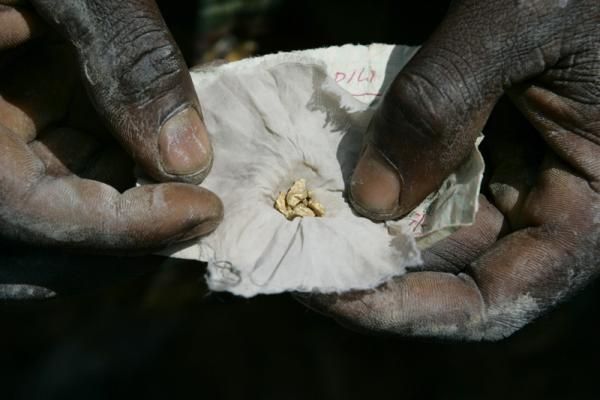See the Educator Notes for Common Core standards and additional resources about Congo.
Introduction:
-
Look at this political map of the world with no labels. Can you locate the Democratic Republic of Congo?
-
Has anyone heard of Congo? What have you heard and in what context?
-
Listen to your teacher present a short introduction about Congo.
-
Today’s lesson explores the connection between the government and economy in the DRC. Before reading, consider the following
-
What do you think the role of a president should be?
-
What connection do you think a president should have to the major businesses in a country?
-
How might a president and his/her family earn money from the businesses in his/her country?
-
If you found out that your president and your president’s family were directly connected to the major business in your country, what would you think?
-
Activity:
-
Read Michael J. Kavanagh, Tom Wilson, and Franz Wild’s article on the intersection of government and the economy in Congo. It is available in the “Resource” section of the lesson plan.
-
Now that you have read about President Joseph Kabila, his family, and the relationship between their businesses and Congo’s economy, you will map out these connections. This will help us visualize what is discussed in the article.
- As individuals or in groups, create a concept map (also called a bubble map or brainstorming map) that illustrates the connection between important people, places, governments, companies, agencies, and events mentioned in the article. For example,

Example 1 of a concept map
illustrates part of the Kabila family tree.
-
Use different colors, spacing, shapes, and lines to help differentiate between different relationships. Make sure to create a key to indicate what you used.
-
Remember to include connections that no longer exist and other historic relationships that impact current connections.
- Example - Orange = Kabila family member, Teal = foreign company, Blue = Congolese company, Black Line = family relationship, Grey Line = business connection, X = No longer exists

Example 2 of a concept map
-
-
Share the map you made with the rest of the class. Work together as a class to create a master map that uses elements from each student or group’s map to best visualize the connections described in the article.
Discussion:
-
Use the master map to discuss the following,
-
Does it look like you expected? Why or why not?
-
What do you notice? What surprises you?
-
Was there anything on someone else’s map that was not on your map? How did you do decide what should and should not be included?
-
-
Use elements of the map and the article (including images) to discuss the following,
-
What is the relationship between the Kabilas’ network of businesses and Congo’s economy?
-
What types of businesses are in this network?
-
-
What factors (political, historic, economic, etc.) impact this connection?
-
How has this network helped or hurt the
-
Country’s economy?
-
The Kabila family's fortunes?
-
The lives of average Congolese citizens?
-
-
What roles do foreign investment, companies, governments, and agencies play in Congo’s economy and the Kabilas' businesses?
-
How has the democratic process in Congo been impacted by the Kabilas' business practices?
-
Why does it matter if Kabila steps down as president or not?
-
What are the potential problems if he refuses to leave office?
-
-
Further Thought:
-
Using evidence from the article and connections that you identified in the mapping exercise, discuss the following:
-
If you were the president of a country, how would your family earn a living?
-
Do you think there should be rules governing the head of state’s family and its finances?
-
If so what type of rules?
-
If not, why not?
-
-
Read closely to determine what the text says explicitly and to make logical inferences from it; cite specific textual evidence when writing or speaking to support conclusions drawn from the text.
Determine central ideas or themes of a text and analyze their development; summarize the key supporting details and ideas.
Analyze how and why individuals, events, or ideas develop and interact over the course of a text.
CCSS.ELA-Literacy.CCRA.R.7
Integrate and evaluate content presented in diverse media and formats, including visually and quantitatively, as well as in words.
Introduction:
- You can find a blank map of Africa here, https://www.eduplace.com/ss/maps/pdf/world_country.pdf After students guess, show them a map with the country clearly labeled. Make sure to differentiate the Democratic Republic of Congo from its neighbor the Republic of the Congo.
- Check online for the most recent current events about Congo that students might bring up in class.
- Create a very short informational presentation (1-3 minutes) about the Democratic Republic of Congo for your students that includes a little about its history, economy, and society. You can find information in the article or online at websites such as
- The Eastern Congo Initiative website
- The Eastern Congo InfoGuide Presentation on the Council on Foreign Relations website
- The CIA WorldFact Book
Activity:
- To save time in class, have students read the article before coming to class.
-
Use the graphs, images, and photography from the article during the activity and discussion. For example, you can use the graphic of family members and companies to jumpstart the mapping activity or have students refer to the map of “Kabila’s Congo” when discussing the family’s mining permits.
- Have students draw concept maps by hand or they can create them online at https://bubbl.us/. Click the “Start Brainstorming” button to create a free concept map without signing in.
Further Thought:
- You can ask these questions as part of discussion in class or assign them as prompts for homework.



